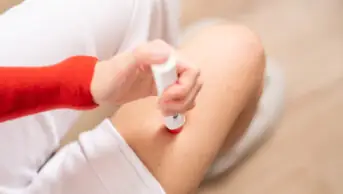An MPharm student research project was carried out at the school of pharmacy at Keele University to explore students’ familiarity with current social media guidance and to raise awareness of the guidance set out by the Royal Pharmaceutical Society (RPS)[1]
and the General Pharmaceutical Council (GPhC)[2]
. The project also sought students’ views on whether personal social media use should affect an individual’s professional life.
Social media comprises internet-based services that allow individuals to create public or semi-public profiles and connect with people with whom they have something in common. Around 77% of internet users report having a social media account, with Facebook being the most popular[3]
. Instagram, Snapchat, YouTube, Twitter, and Tumblr are gaining popularity with young people; individuals aged 16–24 years are more likely to claim one of these as their primary account.
The increased use of social media by healthcare professionals has become a recent topic of discussion. As a result, it is imperative that emerging pharmacy professionals are aware of how their online presence can affect their advancing career.
Pharmacy professionals often use social media for professional use, personal use or both. It can be used to share and exchange opinions, acquire knowledge, disseminate information, gain real-time access to news, network and build a professional profile[4]
. It allows engagement with current research, supports professional development and can keep professionals up to date with clinical and legal developments[2]
. However, professionals must be mindful of who has access to their profile and ensure that they adhere to the standards set out for pharmacy professionals[5]
. The RPS encourages professional social media use, but it advises that clinicians should not make any comments or posts if they have reservations; that they should avoid getting into negative exchanges; and that they should remember they are a professional[2]
. Furthermore, confidentiality regulations should be adhered to at all times.
A priori power calculation was conducted to determine the minimum sample size required to sufficiently represent the opinions of pharmacy students on the use and regulation of social media, and their awareness of current social media guidance. A minimum sample size of 205 students was required to yield results with a 95% confidence level and a ±5% margin of error. Data were collected using a self-completion questionnaire that was distributed among a convenience sample of students registered on the MPharm course at Keele University and in attendance at teaching sessions. The response rate was 55.6% (n=242); the majority of respondents were female and in their first year of the course.
Most respondents (96.3%, n=233) reported having at least one social media account. The most popular providers were Snapchat (82.6%, n=200), Facebook (82.2%, n=199) and Instagram (77.3%, n=187). The data also show that 66.9% (n=162) of respondents check their social media accounts four or more times per day. The least popular providers were Tumblr (9.1%, n=22) and LinkedIn (17.4%, n=42). Some individuals (n=3) stated Pinterest when asked for other options. The majority of respondents (53.0%, n=123) reported that they spend, on average, 0–10 hours on social media per week. Their friends (98.7%, n=230), undergraduate students (76.8%, n=179), current lecturers (7.7%, n=18), previous lecturers/teachers (20.2%, n=47), current work colleagues (36.1%, n=84), previous work colleagues (45.1%, n=105), current employer (13.3%, n=31) and previous employers (15.5%, n=36) have access to their public profile. Table 1 lists the online behaviours considered unprofessional by participants of the research project.
| Online behaviour | Students classifying this behaviour as unprofessional |
|---|---|
| Posting pictures of a patient | 95.9% |
| Posting pictures of an individual taking drugs (smoking cannabis, for example) | 93.8% |
| Posting pictures containing male/female partial nudity | 83.1% |
| Posting negative comments about work colleagues | 82.6% |
| Posting comments about a patients, with no personally identifying information | 79.8% |
| Posting negative comments about lecturers | 76.6% |
| Posting negative comments about teaching programmes or the university | 64.9% |
| Posting controversial comments on other people’s posts | 60.7% |
| Swearing in any comments or posts | 49.6% |
| Posting a picture of other people acting drunk at a party | 43.4% |
| Posting a picture of someone drinking a glass of wine or other alcoholic beverage | 10.7% |
The majority (83.5%, n=202) stated that they know what the potential consequences of inappropriate social media use are, but a minority of students said they had engaged in unprofessional posting behaviour themselves, had material posted about them that made them look unprofessional, or had seen unprofessional posting behaviour from peers or colleagues.
The majority (65.3%, n=158) of respondents disagreed that social media has removed the protection of pharmacy professionals from the public and the majority believe that pharmacy professional social media use should be regulated by the GPhC (66.5%, n=161). There was a small difference between those who thought social media should have no bearing on their pharmacy career (43%, n=103), and those who thought it should (56%, n=136).
The majority of students had not read current social media guidance; however, teaching sessions have raised students’ awareness of the existence of guidelines. Students agree that the GPhC should regulate social media use; however, they also feel that, as long as patient safety is not compromised, pharmacy professionals have the right to a private life that should not affect their professional career.
Narissa Corbett, pharmacy student, school of pharmacy, Keele University, UK
Tracey Coppins, teaching fellow, school of pharmacy, Keele University, UK
References
[1] Royal Pharmaceutical Society. What is social media and why should pharmacists use it? Available at: https://www.rpharms.com/resources/toolkits/social-media-guidance (accessed August 2018)
[2] General Pharmaceutical Council. Demonstrating professionalism online. Available at: https://www.pharmacyregulation.org/news/demonstrating-professionalism-online (accessed August 2018)
[3] Ofcom. Adults’ media use and attitudes report. Available at: https://www.ofcom.org.uk/__data/assets/pdf_file/0011/113222/Adults-Media-Use-and-Attitudes-Report-2018.pdf (accessed August 2018)
[4] Safdar A. Don’t be scared to use social media professionally. Clinical Pharmacist 17 March 2015. doi: 10.1211/CP.2015.20067926
[5] General Pharmaceutical Council. Standards for pharmacy professionals. Available at: https://www.pharmacyregulation.org/spp (accessed August 2018)
